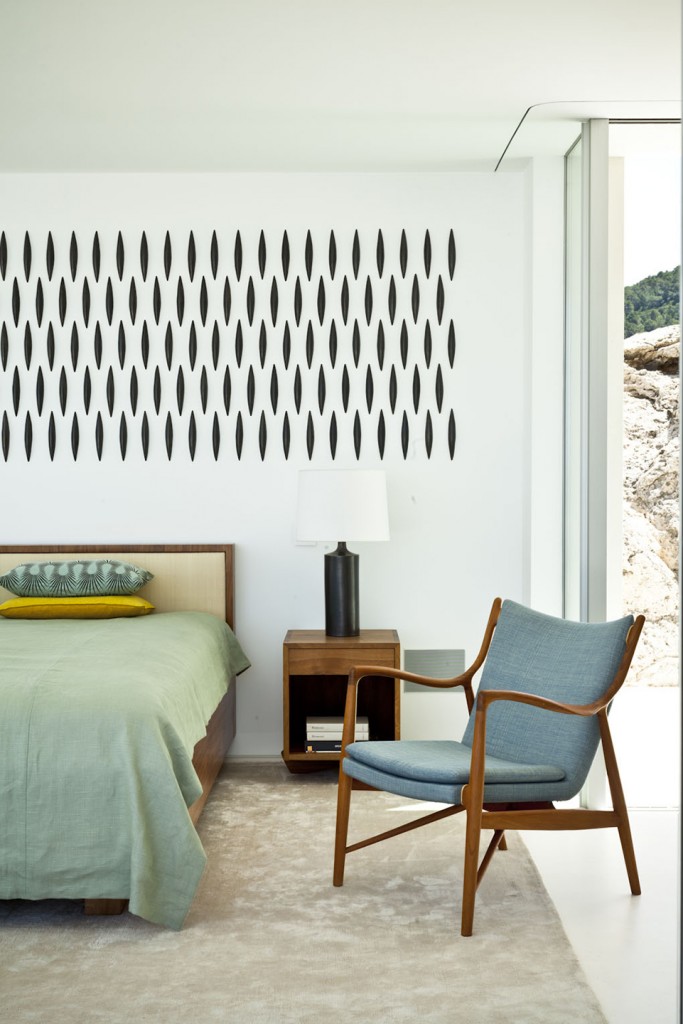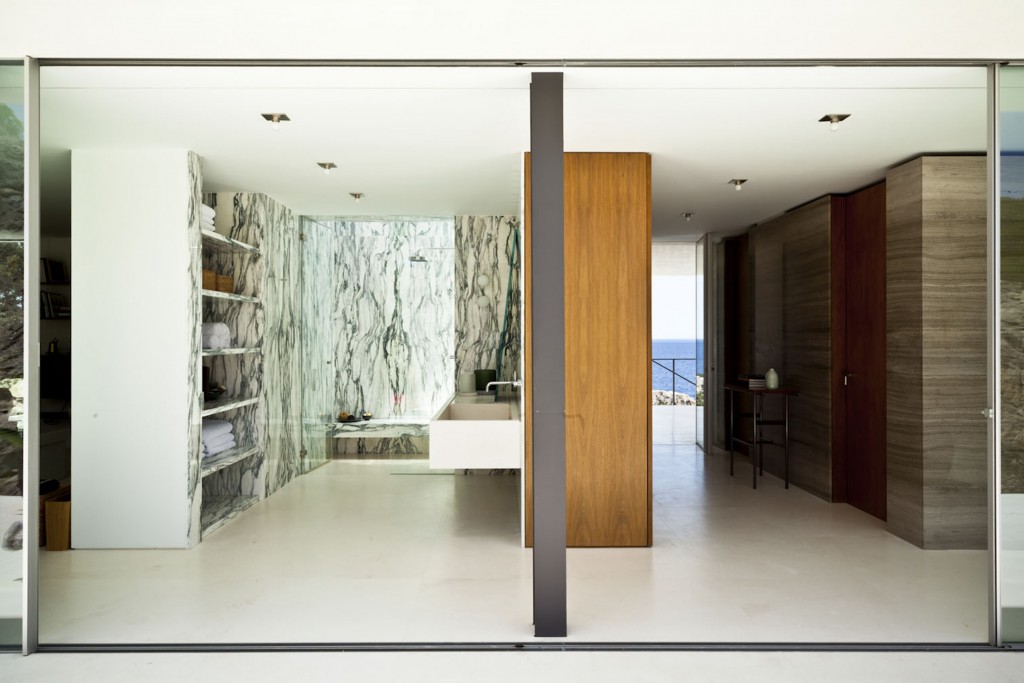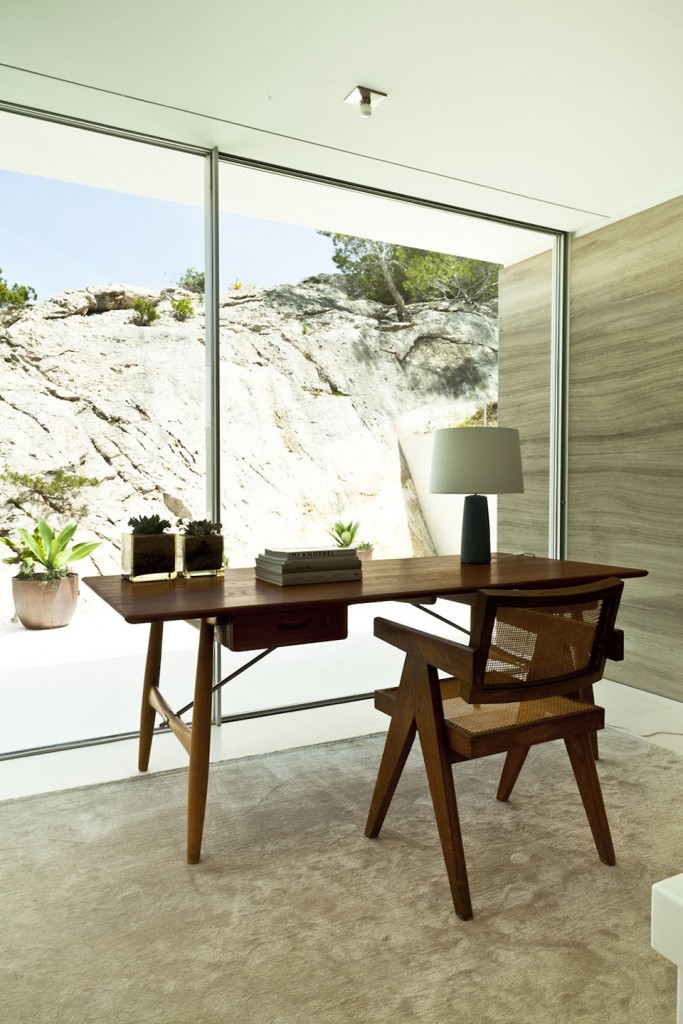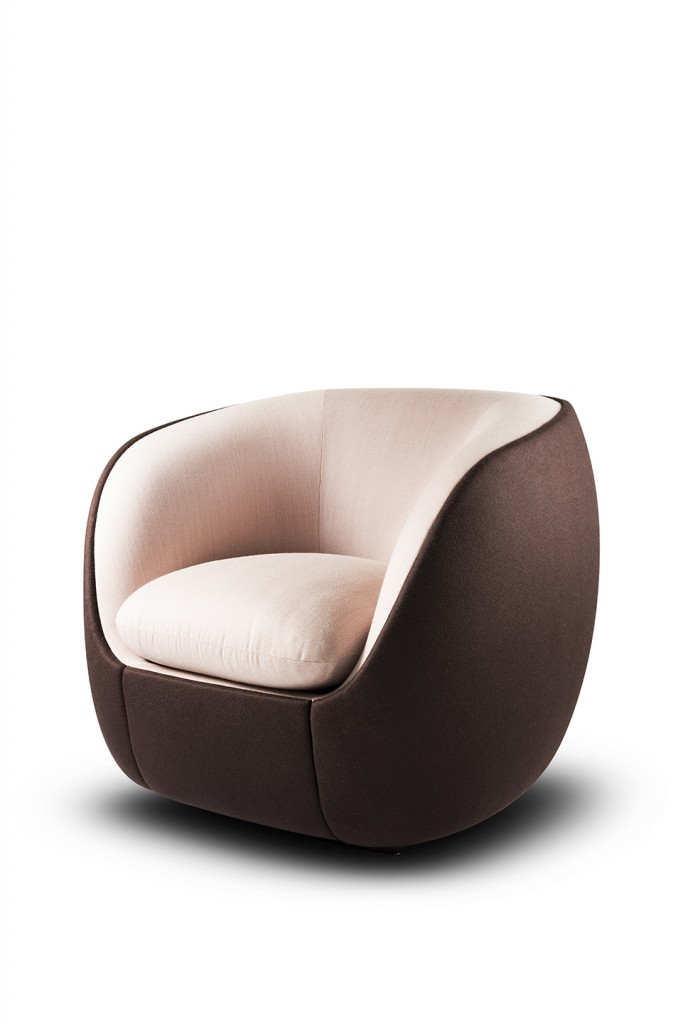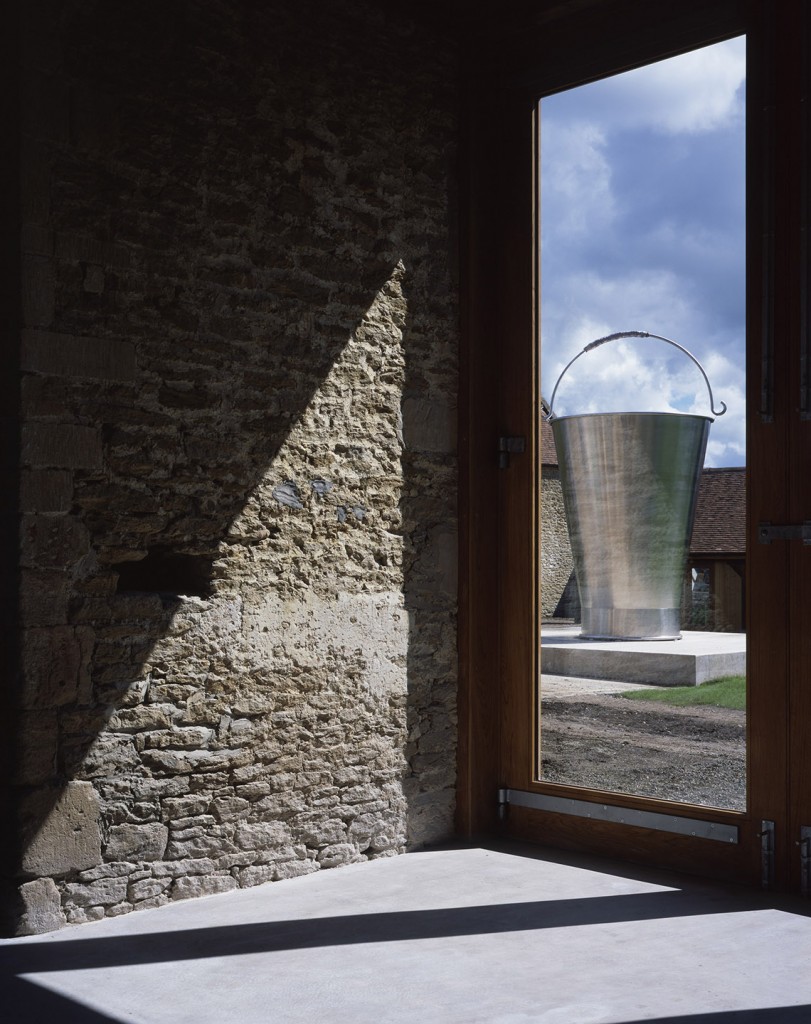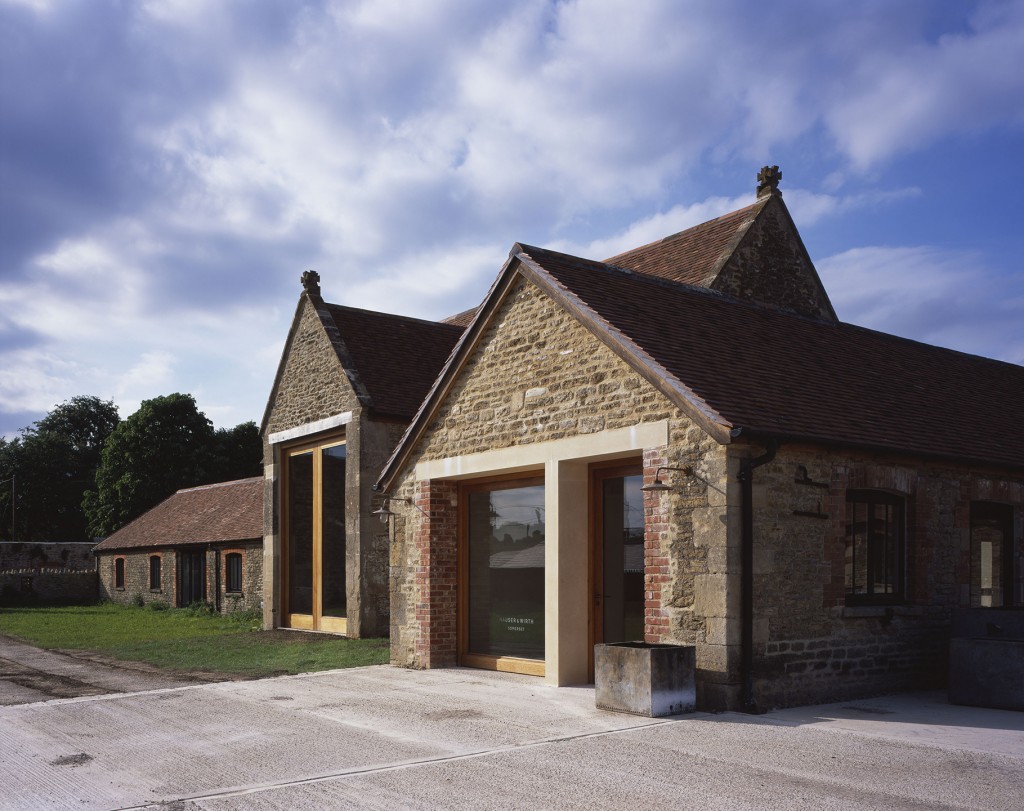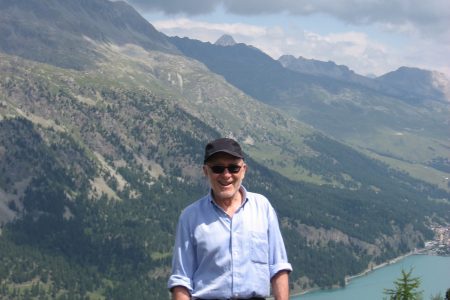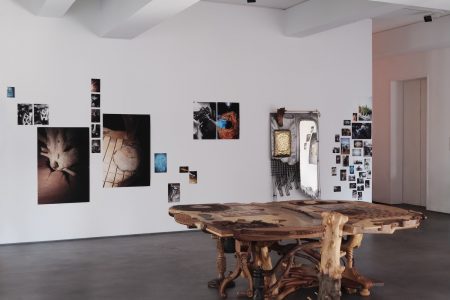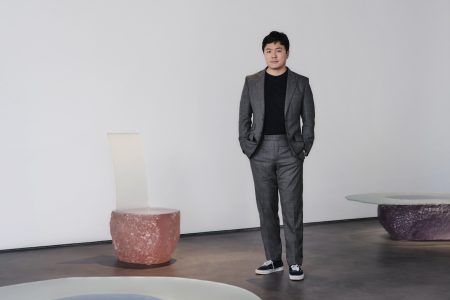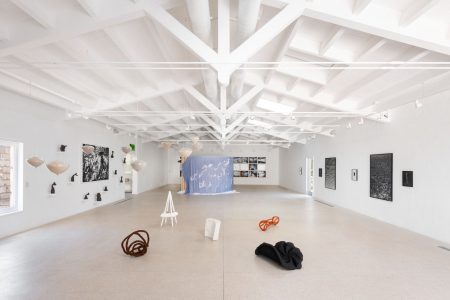Luis Laplace: An Argentine in Paris
Whether designing a gallery or living space or mixing the two, Luis Laplace demonstrates integrity and imagination. In the process, he combines talent, craftsmanship, collections, collectors, artists and places, which he makes as dynamic as possible.
TLmag: When designing contemporary interiors, where you start and finish – in brief, what’s your signature?
Luis Laplace: The foundation of my reflection always begins with context – the history of the place, its particularities and cultural treatment. Then the dialogue with the clients explores their needs and limitations. I try to create interiors that adapt to their way of life as much as possible. Many of my clients are experienced art collectors, so taking their collections into consideration from the start is essential. I don’t have a specific signature but more a clear process that I apply to all my projects. Success results from the exchange between contractors and architects.
TLmag: How has collaboration with renowned artists like Cindy Sherman impacted your process?
LL: Working with artists requires a different approach. They have unusual sensibilities, often a well-defined direction for their own projects, and greater confidence in their choices. Sherman was looking for a colourful Parisian pied-a-terre in-contrast to her New York apartment. She wanted to use plenty of colour, so we pushed the limits of what is normally done with more traditional clients. These collaborations have a big impact because they shine new light on work. It’s obviously a privilege to work with artists of that calibre.
TLmag: What was the process behind the Hauser & Wirth Somerset gallery? Are you already able measure the result? Does it account for something of a perfect design: an art space as a living environment for shared experiences?
LL: Early on, the Hauser & Wirth Somerset concept was revolutionary because it wasn’t about simply building a gallery but a living space with exhibition halls, a restaurant, guest house, conference centre and garden; all while respecting the local architecture. This new type of space needed to reflect the gallery owner’s lifestyle in the heart of the English countryside, involving local craftspeople, farmers, gardeners, students and so on.
From an architectural vantage point, it was important to articulate the old, conserved farm buildings with the new spaces but without clashing the two. My intervention was ultimately very discrete: from far away it’s hard to see what was added. This was an opposite approach to projects that ask for a strong signature, one in which the future use of a place is perhaps overshadowed by an architect’s ego.
At Hauser & Wirth Somerset, I created a garden and sculpture courtyard to soften the transition between both wings. The choice of materials was crucial. The site is located 1.5 hours from London, and we were all surprised by the success of the site, which has had 100 thousand visitors since opening in July 2014. This project continues to evolve: for example, artists in residence bring their own touch and leave works behind. Cultural events are multiplying and having a considerable impact on the once sleepy town of Bruton.
TLmag: How does your South American background influences your day-to-day approach? Why did you set up your practice in Paris? What does this capital offer you that London or New York couldn’t? I’ve often have the impression that your ‘mixed media’ approach and colourful palette – contrasting patterns and prints – elegantly shakes up France’s conservative taste.
LL: My education as an architect was rigorously academic, similar to the pedagogy practiced in pre-World War II Europe. History is a critical part of the standard Argentinian curriculum and a true advantage. I think that it’s necessary to learn about those who came before us before taking on something new. This is true in many domains, but especially architecture.
I always need to think about functionality of what I’m creating by avoiding emotion or changing fashions. On the other hand, Latin America has many contrasts: while education might be traditional, implementation of projects is empirical and certainly less regulated. Therefore, it is easier to work in multiple domains. I never felt that I was ‘only’ an architect; I can be an artist, designer or even a decorator in scenographic terms. There’s a lot of freedom.
It seems that in Europe, individuals are easily labelled or marked within a specific discipline. In the French society, there’s a certain lack of self-confidence and constant concern of what others think. If you operate within several disciplines, you are suspected of being good in none. Since I’m not part of this culture, I don’t share this reticence. For me, creativity needs curiosity and challenges, otherwise you’re unable to renew yourself and only reproduce the same formula. I’m not doing this job to copy the same decor or architecture based-on two or three guidelines. That doesn’t interest me at all. Personally, when someone tells me that it’s difficult to see the similarities between the Hauser & Wirth Somerset farmhouse and a highly contemporary house in Ibiza, I am thrilled!
I followed my partner to Paris where it was easier for us to create our structure. We left New York in 2004 and, as he is very attached to France, convinced me to follow him, giving me the opportunity to concentrate on design while he manages the other our activities.
Under other circumstances, I could have very well continued my career in New York or set myself up in London, as these cities obviously offer greater proximity to potential clients. But Paris is Paris. The city has, however, enriched my vision of interior design, furniture and of design in general. French craftsmanship is remarkable in how it maintains tradition and transfers knowledge from generation to generation.
France offers incredible benefits due to craftspeople working in cabinetry, painting, tapestry, metalworking, and so on. From an interior design point of view, Paris is the leader vis-a-vis London or New York; especially for antiques or vintage pieces due to strong auction houses and flea markets. From here, my office works around the world to deliver projects with finishings and pieces that are almost impossible to achieve on a local level.
From the perspective of architecture, it’s another story, there is a greater dispersement of talent in the Netherlands, Japan, United Kingdom or Switzerland, where avant-garde projects are easier to come by than in France. From a design perspective, France hasn’t always been conservative. Look at Jourdain, Royère, Perriand, Prouvé and Matégot who all moved away for classic tradition in their own way. Many styles and traditions coexist. I would be happy to work on a reinterpretation of an 18th century interior, but if it’s simply to reproduce the exact style of the time, others could it better than me. I bring in colour, because monochrome interiors don’t correspond with my clients’ lifestyle. It’s false, in most cases, to say collectors only want white-cubes to accommodate their collections. However, using colour is risky and more likely to fail, which is why so many use the same colour in multiple interiors. I refuse to do so.
TLmag: If you were a furniture designer, who would you like to embody?
LL: Actually, I do design furniture. My Laplace Bespoke line corresponds to interior projects. However rational, the collection grows empirically. If I want a more avant-garde piece, using unexpected materials or new technologies, I’ll visit galleries like Maria Wettergren or Carpenters Workshop. Both have a varied palette of talented designers. If I were to embody a designer, it would probably be an Italian architect who designed furniture, like Gardella or Albini.
TLmag: Are there architects, artists and designers who have a significant influence on your creative process? Could you highlight from your work a few strong pieces in terms of materials, integrated artwork, unique and ‘site specific’ designs when collaborating, for example, with Maria Wettegren?
LL: One of my most recent creations was a pool acting a screen that displayed a Pipilotti Rist video projected from the ceiling. I wanted to use this piece in an original way. It was a real adventure collaborating on such an installation with an artist like Rist. •
The interview was originally published in TLmag 23, All that Jazz issue in June 2015.
